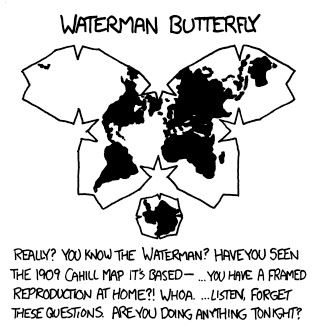

It’s great but it’s $$$.


It’s great but it’s $$$.


My understanding is that you can’t really get an espresso grinder that’s good for French press and vice versa. It may be a cost thing though - why pay $800 for a grinder and use a $20 coffeemaker. Manual grinders do narrow the gap though if you’re willing to put in the work. Usually, I’m not.
Heard good things about Commandante.


It’s interesting that the places that make lots of babies are also the source of emigration to places that make fewer babies.
I would give it more effort if it wasn’t the third tier coffeemaker in my house but routine is routine. Also for a while I had a stove that didn’t work with it as the base was too small vs the burner.
The videos came out well after I’d given up on it. Maybe I’ll dig it out again next weekend. Hot water in the pot and not tamping it probably makes a big difference.
I’ve never been able to get on with Moka pots but certainly a good grinder will make all the difference!
This is your sign that it is now time to use the spice grinder for spices.


Same problems I have… I’m going to have to insulate the garage and put in a minisplit sometime.


Might be able to use a baseboard heater thermostat.
Slightly odd option is to connect it to a car charger like Technology Connections did, and then automate the cafe charger. And then you have a car charger for the future.
Another idea is to consider a mini split heat pump. It won’t be hot, but it’ll take the edge off.


Spot on with the AI C-Suite description.

Educate your friends and relatives and write your representatives at every level. It’s only a small difference but it’s something.


White space sensitive languages are evil.


If they’re powered off they should be listed as unavailable/unknown.


Technical people don’t understand the business, you see.


Yeah, it’s not really built out yet. Zigbee is good enough, thread is supposed to make it better but I’m good with what I’ve got in hue - for now at least.
Isn’t IKEA’s new line thread?


The reason people suggest avoiding wifi is more than just having the isolated network. Between the protocol requirements, the possibility of network congestion, and the high probability of overlapping wifi network signals, it can make them unreliable or just a bit slower than you’d expect a light to work.
Thread enabled devices can make this better, apparently; if I was in the market for bulbs outside of my current zigbee setup I would want Thread. Zigbee is excellent so far for me
Personally, I’m very happy with my Hue lights, but not super happy with the price; I only get them on sale. One aspect that is not discussed enough, in my opinion, is the quality of light (CRI, dimming depth, colour intensity), which hue is great at imho. The new hub does some nerdy stuff for motion detection if you have multiple bulbs in a room which is interesting, though I haven’t looked into it much.


It’s funny how much sense your documentation makes until you come back 3 months later.
3 months later “who wrote this? wtf does this mean? What is the password?”


I don’t believe for a second his family is holding the bag.


Mummy craze was wild. People were eating them as medicine, and they were viewed as a collector item. Egypt was ransacked over decades of colonialism.
https://www.smithsonianmag.com/history/the-gruesome-history-of-eating-corpses-as-medicine-82360284/


Hard SPF and DKIM enforcement helps.
Any ONVIF/ RTSP camera is probably going to work but I still keep them segregated from the Internet.
Motion triggered recording works fine to a SD card on many cameras. I’m so far happy with Reolink.
For remote access look into Tailscale.